Indoor Kitchen Lighting Overview
Indoor kitchen lighting is a critical aspect of home design that significantly impacts both the functionality and aesthetic appeal of one of the most frequently used spaces in any house. The kitchen is not only a place for cooking but also a gathering spot for family and friends, making the lighting choices in this area particularly important. Good lighting can enhance your cooking experience, improve safety, and create a welcoming atmosphere.
Effective kitchen lighting requires careful planning and consideration of various factors such as the layout of the space, the types of activities performed, and the overall style and decor. A well-lit kitchen should ideally have a combination of task lighting, ambient lighting, accent lighting, and decorative lighting. Each type serves a specific purpose and contributes to the overall lighting scheme.

Task lighting is essential for illuminating work areas where food preparation, cooking, and cleaning take place. This type of lighting helps to reduce shadows and glare, making it easier and safer to perform kitchen tasks. Common task lighting solutions include under-cabinet lights, pendant lights over islands, and recessed lights above countertops.
Ambient lighting provides general illumination and ensures that the kitchen is evenly lit. This type of lighting is typically achieved through ceiling-mounted fixtures such as chandeliers, flush-mount or semi-flush-mount lights, and recessed ceiling lights. Ambient lighting creates a comfortable level of brightness without causing harsh shadows.

Accent lighting is used to highlight specific features or areas within the kitchen, such as a beautiful backsplash, a piece of artwork, or architectural details. This type of lighting adds depth and dimension to the space, making it more visually interesting. Examples of accent lighting include track lights, wall sconces, and adjustable recessed lights.
Finally, decorative lighting serves as a statement piece that adds personality and style to the kitchen. These fixtures often combine functionality with aesthetic appeal, contributing to the overall design theme. Chandeliers, pendant lights with unique designs, and vintage-inspired fixtures are popular choices for decorative lighting.

Understanding Different Types of Kitchen Lighting
When planning your kitchen lighting, it’s important to understand the different types of lighting available and how they can be used to create a balanced and effective lighting scheme. Each type of lighting serves a specific purpose and, when combined, can enhance both the functionality and aesthetic appeal of your kitchen.
Task Lighting: Task lighting is crucial in the kitchen as it provides focused light for specific tasks such as chopping vegetables, reading recipes, or washing dishes. Under-cabinet lighting is a popular choice for task lighting as it illuminates the countertop without creating shadows. LED strip lights or puck lights are commonly used for this purpose. Pendant lights over a kitchen island or sink also provide excellent task lighting, ensuring you have sufficient light exactly where you need it.
Ambient Lighting: Ambient lighting is the primary source of light in your kitchen, providing overall illumination. This type of lighting ensures that the entire space is well-lit and comfortable to work in. Recessed ceiling lights, flush-mount or semi-flush-mount fixtures, and large pendant lights can all serve as sources of ambient lighting. It’s important to distribute ambient light evenly throughout the kitchen to avoid dark corners and create a welcoming atmosphere.
Accent Lighting: Accent lighting adds visual interest and highlights specific features in your kitchen. This type of lighting is used to draw attention to architectural details, artwork, or decorative elements. Track lighting, adjustable recessed lights, and wall-mounted sconces are common choices for accent lighting. By strategically placing accent lights, you can create focal points and add depth to your kitchen design.
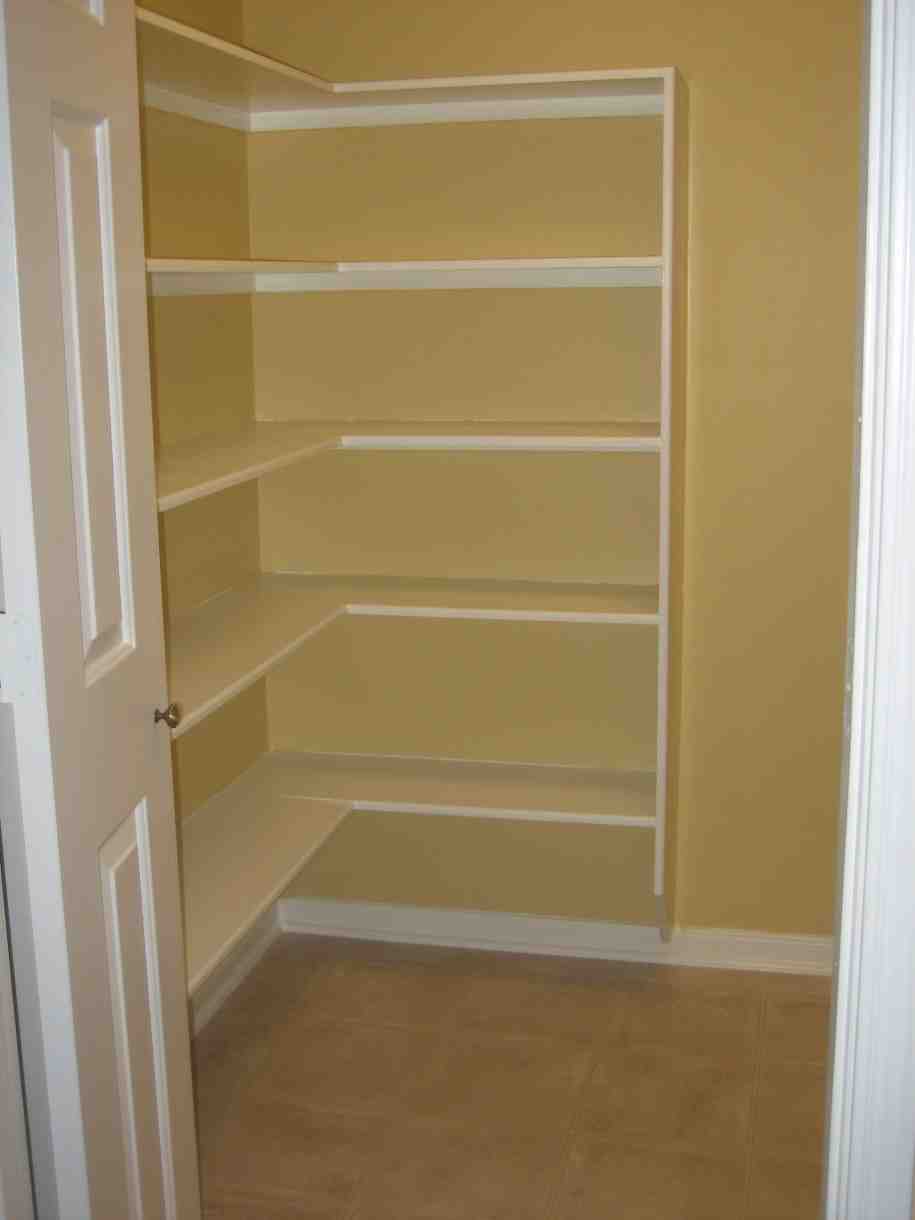
Decorative Lighting: Decorative lighting fixtures are chosen primarily for their aesthetic appeal and ability to enhance the overall design of the kitchen. These fixtures often double as sources of ambient or accent lighting. Chandeliers, unique pendant lights, and designer fixtures add a touch of elegance and style to the space. When selecting decorative lighting, consider the overall theme and decor of your kitchen to ensure a cohesive look.
Natural Lighting: While not a type of artificial lighting, natural light plays a significant role in kitchen lighting. Maximizing the amount of natural light in your kitchen can reduce the need for artificial lighting during the day and create a bright, airy atmosphere. Large windows, skylights, and glass doors are effective ways to bring natural light into your kitchen. Consider the placement of these features to take full advantage of the available sunlight.
Smart Lighting: With advancements in technology, smart lighting solutions have become increasingly popular in modern kitchens. Smart lighting systems allow you to control your kitchen lights using a smartphone, tablet, or voice commands. These systems often come with features such as dimming, color changing, and scheduling, offering both convenience and energy efficiency. Smart lighting can be integrated into various types of kitchen lighting, providing flexibility and control.
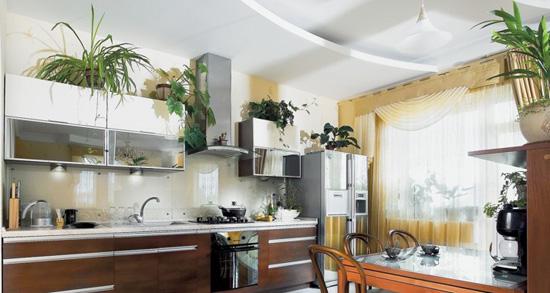
Designing a Layered Lighting Plan
A well-designed kitchen lighting plan incorporates multiple layers of light to ensure the space is both functional and aesthetically pleasing. Layered lighting involves using a combination of task, ambient, accent, and decorative lighting to create a balanced and versatile lighting scheme. Here are some key considerations for designing a layered lighting plan for your kitchen.
Assessing the Space: The first step in designing a layered lighting plan is to assess the kitchen space. Consider the layout, size, and architectural features of the kitchen. Identify the main work areas, such as the countertops, sink, stove, and island. Understanding the different zones within the kitchen will help you determine where specific types of lighting are needed.
Combining Lighting Types: To create a layered lighting plan, combine different types of lighting in a way that complements each other. For example, you can use recessed ceiling lights for ambient lighting, under-cabinet lights for task lighting, pendant lights for both task and decorative lighting, and track lights for accent lighting. Each layer of light should work together to provide sufficient illumination and enhance the overall design.
Using Dimmers: Installing dimmer switches is an effective way to add flexibility to your kitchen lighting. Dimmers allow you to adjust the brightness of your lights to suit different activities and moods. For instance, you can use bright lighting when preparing meals and dim the lights for a more relaxed ambiance during dinner. Dimmers can be used with various types of lighting, including recessed lights, pendant lights, and under-cabinet lights.
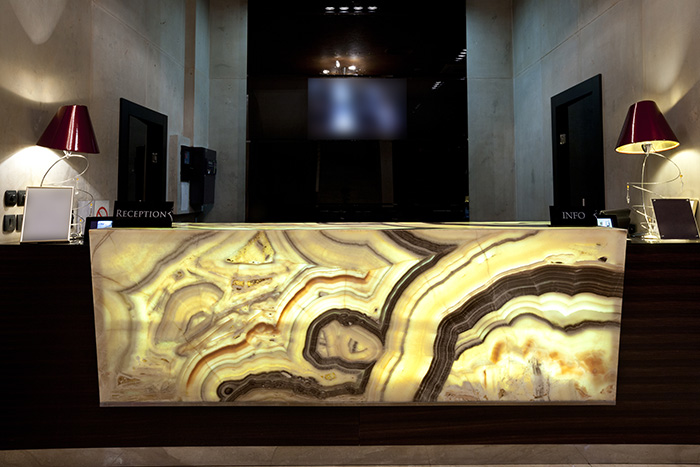
Considering Color Temperature: The color temperature of your lighting can significantly impact the look and feel of your kitchen. Warm white light (2700K-3000K) creates a cozy and inviting atmosphere, making it suitable for ambient and decorative lighting. Cool white light (3500K-4100K) is brighter and more energizing, ideal for task lighting. Daylight (5000K-6500K) mimics natural light and is often used in kitchens to create a bright and vibrant environment. Consider using different color temperatures for different layers of lighting to achieve the desired effect.
Planning for Shadows: When designing your lighting plan, be mindful of shadows that can be cast by cabinets, appliances, or even people working in the kitchen. Under-cabinet lighting can help eliminate shadows on countertops, while strategically placed recessed lights can reduce shadows in other areas. Pendant lights over the kitchen island should be positioned to provide even illumination without casting harsh shadows.
Integrating Lighting Controls: Modern lighting controls, such as smart switches, motion sensors, and timers, can enhance the functionality and convenience of your kitchen lighting. Smart lighting systems allow you to control your lights remotely and set schedules for different times of the day. Motion sensors can automatically turn lights on and off when you enter or leave the kitchen, providing both energy savings and convenience. Timers can be used to ensure lights are turned off when not needed, further improving energy efficiency.
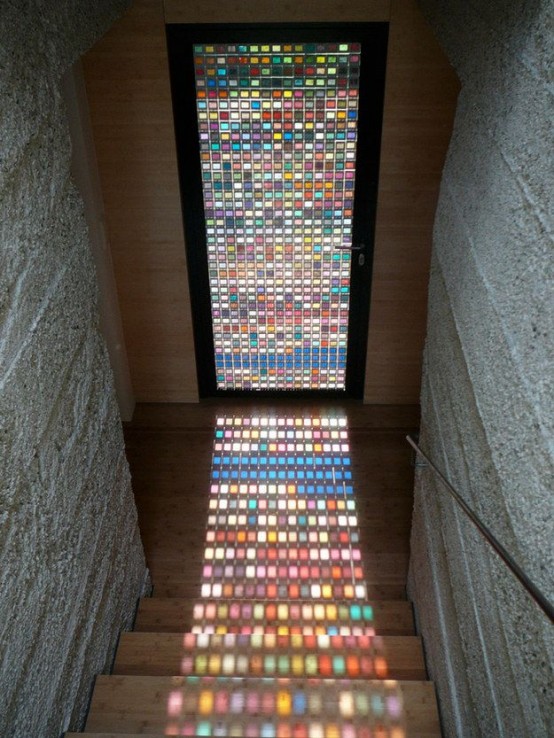
Choosing the Right Fixtures
Selecting the right lighting fixtures for your kitchen is crucial for achieving the desired look and functionality. With a wide variety of fixtures available, it’s important to consider factors such as style, size, placement, and light output. Here are some guidelines to help you choose the right fixtures for your kitchen.
Style and Design: The style of your lighting fixtures should complement the overall design and decor of your kitchen. Whether you have a modern, traditional, farmhouse, or industrial kitchen, there are fixtures available to match your style. For a cohesive look, choose fixtures that coordinate with other elements in the kitchen, such as cabinetry, hardware, and countertops. For example, sleek and minimalist fixtures work well in modern kitchens, while rustic or vintage-inspired fixtures suit farmhouse or traditional kitchens.
Size and Scale: The size and scale of your lighting fixtures should be proportionate to the space and the area they are illuminating. Large fixtures can overwhelm a small kitchen, while small fixtures may not provide sufficient light in a larger space. When selecting pendant lights for a kitchen island, consider the length and width of the island to determine the appropriate size and number of pendants. For chandeliers or large pendant lights, ensure there is enough clearance above and around the fixture to avoid obstructing movement.
Placement and Height: Proper placement of lighting fixtures is essential for achieving effective illumination. For task lighting, such as under-cabinet lights, ensure the fixtures are positioned to eliminate shadows on the countertop. Pendant lights over a kitchen island or dining area should be hung at the appropriate height to provide adequate light without obstructing the view. A general rule of thumb is to hang pendant lights 30-36 inches above the countertop or dining table. Recessed lights should be evenly spaced to provide uniform ambient lighting.
Light Output and Brightness: The light output and brightness of your fixtures should be suitable for the specific area and activities in the kitchen. Task lighting should be bright enough to illuminate work surfaces, while ambient lighting should provide a comfortable level of overall illumination. The brightness of a light fixture is measured in lumens, and the recommended lumens for different areas of the kitchen can vary. For example, task lighting may require 70-100 lumens per square foot, while ambient lighting may require 20-50 lumens per square foot. Consider using fixtures with adjustable brightness or dimmers to provide flexibility.
Energy Efficiency: Energy-efficient lighting options, such as LED fixtures, can help reduce energy consumption and lower utility bills. LED lights are long-lasting, consume less energy, and produce less heat compared to traditional incandescent or halogen bulbs. When choosing fixtures, look for those with the ENERGY STAR label, which indicates they meet strict energy efficiency guidelines. Additionally, consider using motion sensors or smart lighting controls to further enhance energy efficiency.
Special Features: Some lighting fixtures come with special features that can enhance their functionality and convenience. For example, fixtures with built-in dimmers allow you to adjust the brightness to suit different activities and moods. Fixtures with adjustable heads or arms can be directed to focus light exactly where it’s needed. Smart lighting fixtures can be controlled remotely via a smartphone app, allowing you to set schedules, change colors, and adjust brightness with ease. Consider these features when selecting fixtures to add convenience and versatility to your kitchen lighting.

Installation and Maintenance
Proper installation and maintenance of kitchen lighting are essential to ensure safety, longevity, and optimal performance. Whether you are installing new fixtures or maintaining existing ones, following best practices can help you achieve the best results. Here are some key considerations for installation and maintenance.
Professional Installation: While some lighting fixtures can be installed by homeowners, others may require professional installation to ensure safety and compliance with electrical codes. For complex installations, such as recessed lighting, pendant lights over an island, or smart lighting systems, it’s advisable to hire a licensed electrician. Professional installation ensures that the wiring is correctly done, fixtures are securely mounted, and any potential issues are addressed.
Wiring and Electrical Considerations: When installing new lighting fixtures, it’s important to consider the existing wiring and electrical capacity of your kitchen. Overloading circuits can lead to electrical hazards, so it’s essential to ensure that your electrical system can handle the additional load. If necessary, consult an electrician to upgrade the wiring or add new circuits. Additionally, ensure that all wiring is properly grounded and that fixtures are installed according to the manufacturer’s instructions.
Fixture Placement: Proper placement of lighting fixtures is crucial for achieving effective illumination and avoiding shadows. When installing recessed lights, ensure they are evenly spaced to provide uniform ambient lighting. Under-cabinet lights should be positioned towards the front edge of the cabinets to eliminate shadows on the countertop. Pendant lights over an island or dining area should be hung at the appropriate height to provide adequate light without obstructing the view. Use a stud finder to locate ceiling joists or wall studs for secure mounting.
Bulb Replacement: Regularly check and replace light bulbs as needed to maintain optimal lighting levels. When replacing bulbs, ensure that the wattage and type match the fixture’s specifications. Using the wrong wattage can cause overheating and damage the fixture. Consider upgrading to LED bulbs, which are more energy-efficient and have a longer lifespan than traditional incandescent or halogen bulbs. Keep spare bulbs on hand to quickly replace any that burn out.
Cleaning and Maintenance: Regular cleaning and maintenance of lighting fixtures are essential to keep them looking their best and performing optimally. Dust and dirt can accumulate on fixtures, reducing their light output and causing them to overheat. Use a soft cloth or duster to clean fixtures regularly, and avoid using harsh chemicals that can damage the finish. For glass shades or covers, remove them periodically and wash them with mild soap and water. Check the fixtures for any signs of wear or damage, such as loose screws or frayed wires, and address any issues promptly.
Smart Lighting Maintenance: If you have smart lighting fixtures, ensure that the software and firmware are regularly updated to maintain functionality and security. Check for updates from the manufacturer and follow their instructions for installation. If you encounter any issues with connectivity or performance, consult the manufacturer’s troubleshooting guide or contact customer support. Regularly test the smart lighting system to ensure that all features, such as dimming, color changing, and scheduling, are working correctly.
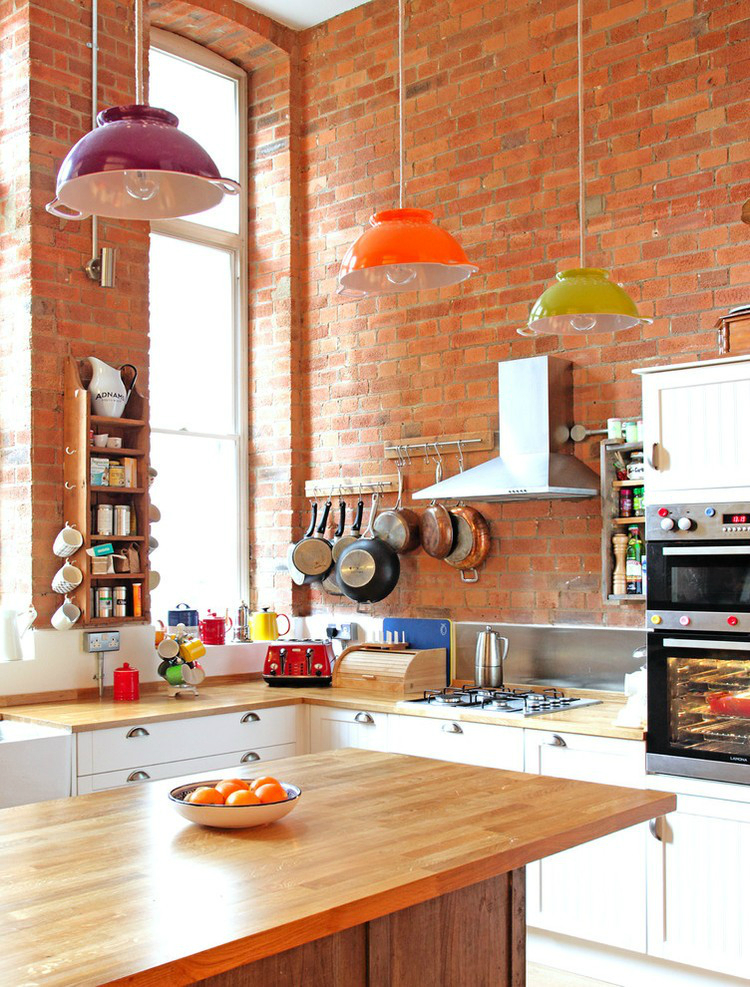
Common Mistakes to Avoid
Ignoring Task Lighting: One of the most common mistakes in kitchen lighting design is neglecting task lighting. Without adequate task lighting, areas, where you prepare food, cook, and clean, can be poorly lit, making it difficult to perform these tasks safely and efficiently. Always include sufficient task lighting in your lighting plan to ensure these areas are well-illuminated.
Overlooking Layered Lighting: Relying on a single source of light can result in a flat and uninviting kitchen. Failing to incorporate layered lighting, which includes task, ambient, accent, and decorative lighting, can leave certain areas underlit or overly bright. A well-designed lighting plan should include multiple layers of light to create a balanced and versatile lighting scheme.
Incorrect Fixture Placement: Placing fixtures incorrectly can lead to inadequate lighting or unwanted shadows. For example, installing recessed lights too far apart can create dark spots, while placing pendant lights too low can obstruct views and movement. Proper placement of fixtures is crucial for effective illumination and functionality.
Choosing the Wrong Bulbs: Using bulbs with the wrong wattage or color temperature can affect the look and feel of your kitchen. Bulbs that are too bright can create a harsh, uninviting atmosphere, while those that are too dim can make the space feel gloomy. Always choose bulbs that match the fixture’s specifications and consider the color temperature that best suits your kitchen’s design.
Ignoring Dimmers and Controls: Not installing dimmers or lighting controls can limit the flexibility of your kitchen lighting. Dimmers allow you to adjust the brightness to suit different activities and moods, while smart lighting controls offer convenience and energy efficiency. Including dimmers and smart controls in your lighting plan can enhance the functionality and versatility of your kitchen lighting.
Neglecting Maintenance: Failing to maintain your lighting fixtures can lead to reduced performance and shortened lifespan. Dust and dirt can accumulate on fixtures, affecting their light output and causing them to overheat. Regular cleaning and maintenance are essential to keep your fixtures looking their best and performing optimally. Additionally, check for any signs of wear or damage and address any issues promptly.

How do I choose the right lighting for my kitchen?
Choosing the right lighting for your kitchen involves understanding the different types of lighting and how they can be used to create a balanced and effective lighting scheme. Consider the layout of your kitchen, the activities performed in different areas, and the overall style and decor. Incorporate a combination of task lighting, ambient lighting, accent lighting, and decorative lighting to achieve a well-lit and visually appealing space.
What is the best type of lighting for kitchen task areas?
For kitchen task areas, such as countertops, the sink, and the stove, task lighting is essential. Under-cabinet lighting is a popular choice as it provides focused light directly on the work surface. LED strip lights or puck lights are commonly used for this purpose. Pendant lights over the kitchen island or sinks also provide excellent task lighting, ensuring you have sufficient light where you need it most.
How can I maximize natural light in my kitchen?
Maximizing natural light in your kitchen can create a bright and airy atmosphere while reducing the need for artificial lighting during the day. Consider installing large windows, skylights, or glass doors to bring in more natural light. Keep window treatments minimal to allow maximum light penetration. Additionally, use light-colored or reflective surfaces, such as white cabinets and glossy countertops, to enhance the natural light in the space.
What are the benefits of using LED lighting in the kitchen?
LED lighting offers several benefits for the kitchen. LEDs are energy-efficient, consuming less electricity than traditional incandescent or halogen bulbs, which can help reduce energy bills. They also have a longer lifespan, reducing the frequency of bulb replacements. LEDs produce less heat, making them safer and more comfortable to use in the kitchen. Additionally, LED lights are available in various color temperatures, allowing you to choose the right light for different areas of the kitchen.
How high should pendant lights be hung over a kitchen island?
The ideal height for hanging pendant lights over a kitchen island is typically 30-36 inches above the countertop. This height provides adequate light for the work surface while ensuring the lights are not too low to obstruct views or movement. The exact height can vary depending on the size of the pendant lights and the height of the ceiling. For a more precise measurement, consider the distance from the bottom of the pendant light to the countertop, ensuring it falls within the recommended range.
How can I incorporate smart lighting into my kitchen?
Incorporating smart lighting into your kitchen involves choosing smart lighting fixtures or bulbs that can be controlled remotely via a smartphone app, voice commands, or a smart home system. Look for smart lighting products that offer features such as dimming, color changing, and scheduling. Install smart switches or plugs to control existing fixtures. Additionally, consider integrating motion sensors or timers to enhance convenience and energy efficiency. Smart lighting can provide flexibility and control, allowing you to customize your kitchen lighting to suit different activities and moods.

Related Posts: